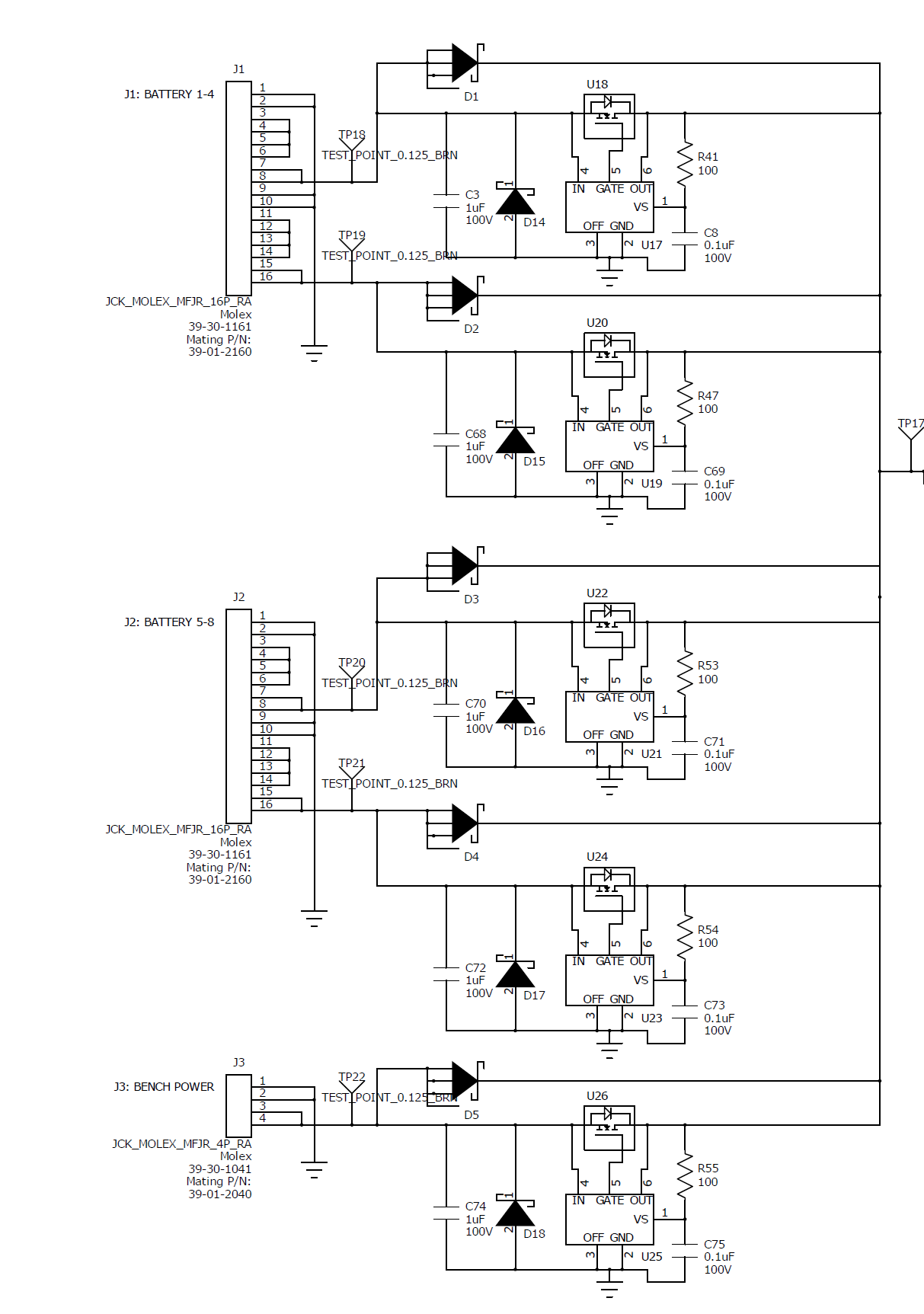I am designing for an application with four parallel 48V nominal battery banks. I am trying not to use Schottky diodes because even they are using too much power. I would like to use the 5050-1 but there is one line in the data sheet that is worrying me:
8.1.1 MOSFET Selection 4. (b)
Reverse current leakage. In cases where multiple input supplies are closely matched it may be possible
for some small current to flow continuously through the MOSFET drain to source (that is, reverse)
without activating the LM5050-1 Reverse Comparator. Higher RDS(ON) will reduce this reverse currentlevel.
As the power supplies are batteries, there will be times before they even out that they will be very close to each other. Can you comment on how much a "small current flow" is and if this would be detrimental to the LM5050 or FET?


